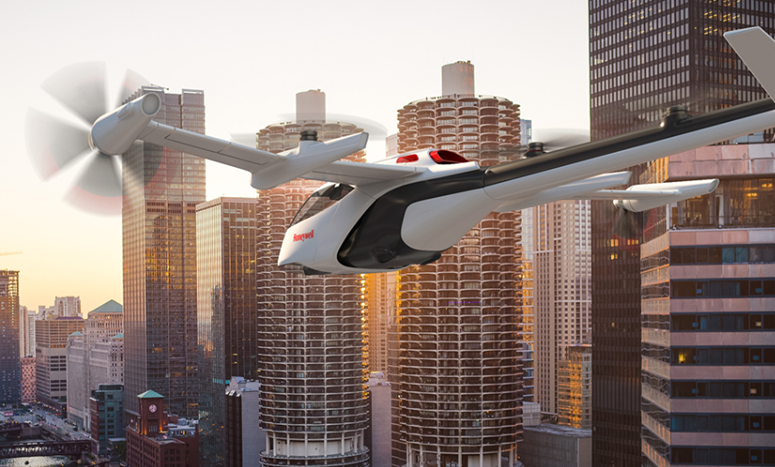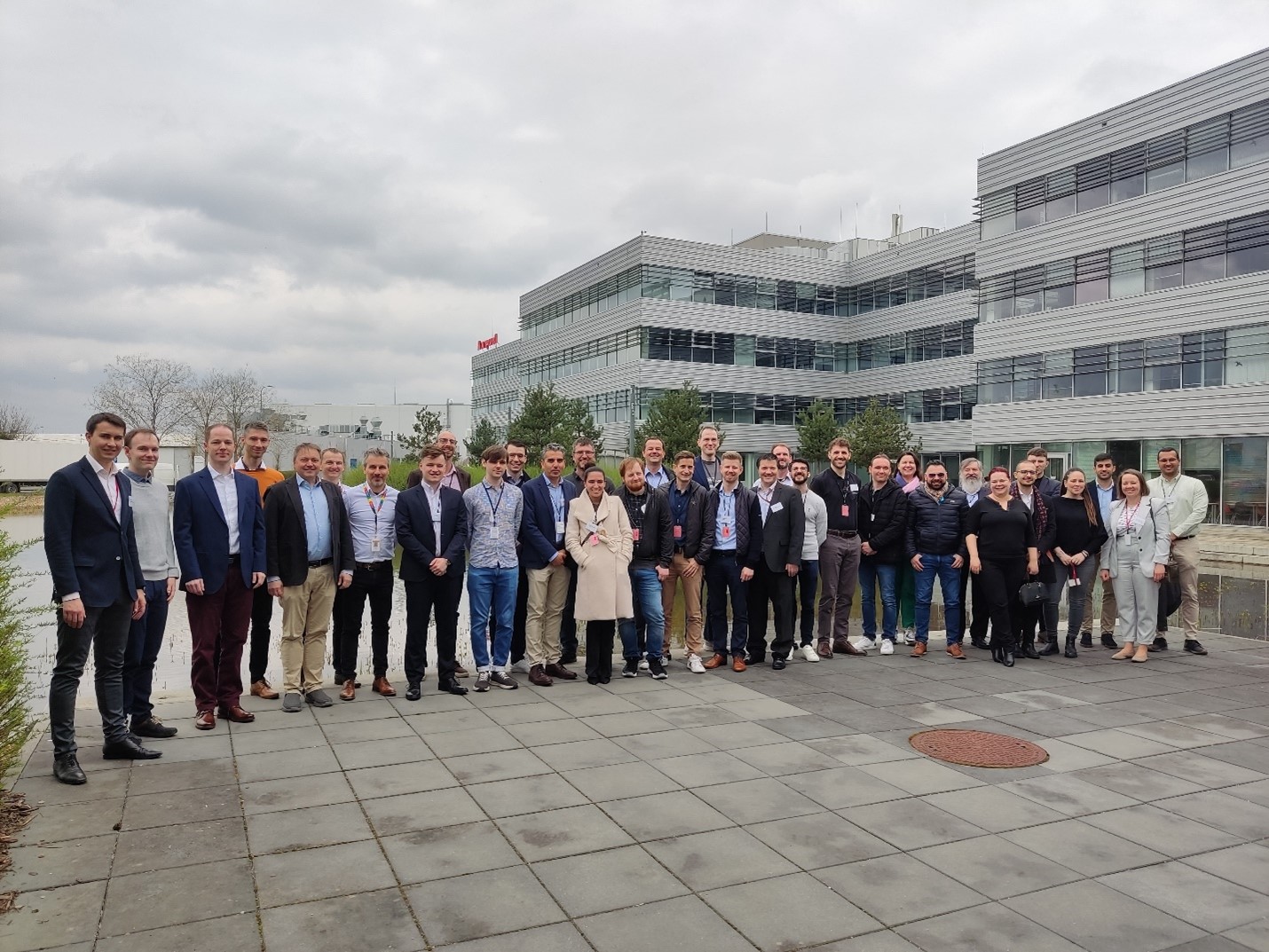With a focus on piloted and uncrewed eVTOL operations, the OperA project is developing a range of technologies and procedures that will allow these innovative air mobility aircraft to operate across all classes of airspace.
Whether it be transporting passengers or delivering cargo, innovative air mobility (IAM) using electric vertical take-off and landing (eVTOL) aircraft has the potential to revolutionise urban and regional transportation.
However, before this potential can be fully realised, these advanced and soon-to-be autonomous aircraft must be able to safely and efficiently operate anywhere and across all types of airspace – including U-space.
Helping to make this happen is the OperA project.
The SESAR JU-funded Fast Track project looks to accelerate the deployment of IAM by focusing on validating several business-driven IAM use cases in real air traffic management conditions. Planned execution of these operations include both contingency and non-contingency situations and air/ground integration. The project also looks to help enable the transition from piloted to automated flights by developing autonomy-enabling technologies and infrastructure solutions.
“We believe that aviation autonomy and automation are key to scaled and safe advanced mobility operations,” says Jiri Ilcik, programme manager at Honeywell, the project’s coordinating partner. “The technologies being developed in this project will undoubtedly play a vital role in integrating crewed and uncrewed eVTOL aircraft into different types of airspace.”

New procedures for crewed eVTOL operations
On the passenger transportation side of the equation, Ilcik notes that the fact these aircraft will be carrying people underscores the need for the highest levels of operational reliability and safety.
“That’s why we believe the path to commercial deployment should start with adapting current requirements for crewed aviation, which have proven to be adequate for passenger transport, to the unique needs of eVTOL aircraft,” he says.
To illustrate, Ilcik points to how eVTOLs will often need to operate in uncontrolled airspace where the responsibility for staying a safe distance from surrounding traffic and obstacles lies with the flight crew. While initial operations are expected to be performed under Visual Flight Rules (VFR) conditions where the pilot uses their eyes to perform these tasks, this type of approach will not allow IAM aircraft to serve passengers needing to travel during the night and in low visibility weather conditions.
“Transitioning towards eVTOL operations under Instrument Flight Rules (IFR) conditions in both controlled and uncontrolled airspaces represent a crucial step towards commercially viable IAM deployment,” explains Ilcik.
To help make this transition happen, the project is working on both operational and technological enablers, including new efficient IFR procedures for eVTOL operations within the current ATM environment. The project is also developing technologies that will help eVTOLs operate at scale by supporting a higher level of on-board automation and pilot decision making during both nominal and contingency situations.
A seamless integration of uncrewed IAM vehicles into the aviation ecosystem
Unlike their crewed counterparts, the regulatory framework pertaining to the design and operations of uncrewed cargo aircraft is still an early work-in-progress. In fact, regulators are currently working to define the initial building blocks that will enable safe, efficient, and sustainable eVTOL operations.
As a result, most uncrewed cargo aircraft currently avoid flying over crowded urban areas and are segregated from other traffic. This is especially the case when flying Beyond Visual Line of Sight (BVLOS).
“This represents a significant limitation to the use of eVTOLs – one that greatly curtails the potential benefits they can deliver to society,” says Ilcik. “It also highlights the need for a clear path for achieving flexible uncrewed cargo operations anytime, anywhere.”
Here too, OperA is delivering results. “We are developing and validating the airborne and on-ground technology enablers and addressing the procedures, standardisations, regulations, and roadmaps that will enable uncrewed aerial vehicles to operate in all types of airspace,” notes Ilcik.
In its role as a technology enabler, the project recently demonstrated a new ground control station for eVTOL cargo aircraft. The flight test took place in Austria and leveraged the functionalities of an innovative two-display ground control station that allows the operator to interact with air traffic management via a real-time data exchange with ATM and U-space systems.
“This demonstration represents a critical step toward integrating IAM solutions into everyday airspace and opens the door to significant advancements in autonomous cargo drone operations,” remarks Ilcik.
Using both simulated and real drones, the Honeywell-developed ground control station also demonstrated the initial implementation of a ground-based detect and avoid solution. This important safety tool is designed to make drone flights safer and more reliable, especially when operating in uncontrolled airspace.
As ubiquitous as airplanes
The project’s various solutions and technologies are now moving towards full demonstrations with actual IAM aircraft, which are expected to be completed by 2026. In the leadup to this, the project is busy with a plenty of preparatory activities, including maturing the different technologies, defining procedures, and obtaining the required approvals.
In addition to this work, the project is looking to develop and implement the necessary operational procedures and mitigation measures that will allow these aircraft to actually operate once all the enabling technologies are in place. On top of this, the consortium is working to ensure both the environmental sustainability and social acceptance of IAM operations and aircraft in Europe.
“The importance of our work will be clear when e piloted and uncrewed eVTOLs are as ubiquitous as airplanes and are safely connecting cities, feeding airports, delivering goods, and transporting passengers across Europe,” concludes Ilcik.

Caption: The OperA consortium consists of 14 value-chain partners, including eVTOL OEMs (Lilium, Pipistrel, Vertical), ANSPs (Enaire, LGS, ON), technology and infrastructure providers (Frequentis, Honeywell, Skyzr), airport/vertiport infrastructure providers/operators (AENA, Skyports), drone operator (Volatus Aerospace), research institution (Crida) and Eurocontrol.
More about the project:
